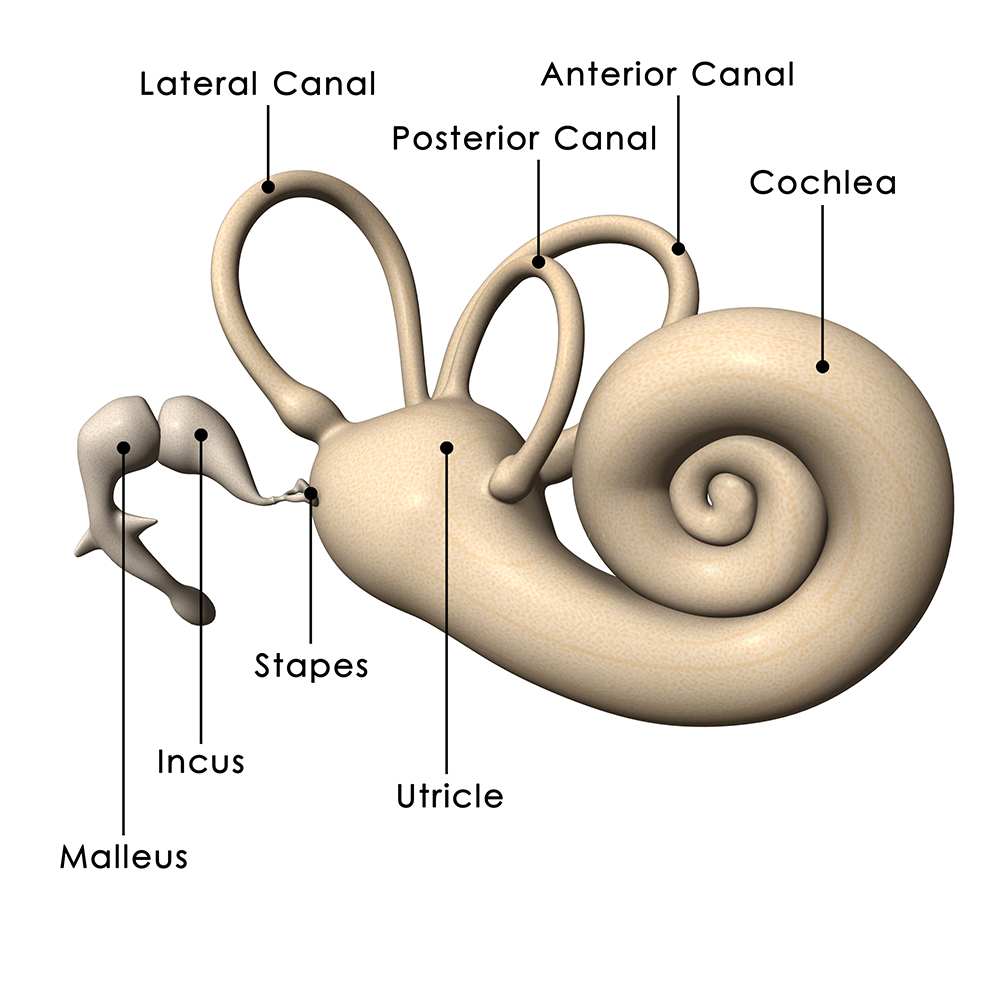Benign Paroxysmal Positional Vertigo (BPPV) & Epley Maneuver
One of the more common reasons for dizziness which presents with occasional vertigo is benign paroxysmal positional vertigo. This is a result of microscopic crystal formations within the fluid chambers of the inner ear.
The organ of balance (vestibule) is made up of three semicircular canals, each one in a different plane of orientation. Typically, when we move our head from side-to-side or up and down, the fluid moves around the canals, and the direction of the flow orients us about our position relative to the environment around us.
Occasionally, the fluid within these chambers can form a microscopic crystal, which then leads to dizziness. Basically, as the head moves around, the crystal is pushed or pulled in different directions. If that crystal touches the nerve endings, a sudden sensation of acute vertigo ensues, and the patient feels dizziness and vertigo.

The diagnosis of Benign Paroxysmal Positional Vertigo (BPPV) could usually be easily made in an office setting. The Ear, Nose, and Throat doctor performs a Dix-Hallpike positional testing that usually confirms the presence or absence of the condition, as well as determining which is the affected side. Once the diagnosis is confirmed, and is determined which is the affected side, the condition could be reversed with a simple office exercise called Epley Maneuver. In simple terms, the head is rotated in a certain direction, and the pull of gravity is used to pull away the crystal from the narrow ending where all the nerve terminals are into the wider reservoir where the crystal can settle and dissolve over time.
I generally recommend that patients perform the same procedure at home a few more times over the next week. Please refer to the Instructions to Epley Maneuver attachment for specific instructions for how this procedure can easily be performed in the home setting. Dr. Namdar usually distributes this handout to his patients once a diagnosis of BPPV has been confirmed and the first Eply maneuver has been performed in the office under his supervision.
BPPV and Epley Maneuver Instructions
Before performing this procedure at home, it is important to see your Ear, Nose, and Throat specialist to rule out any other reasons for your dizziness. Additionally, if the patient does not respond to the Epley maneuver, additional testing may be necessary to determine other reasons for dizziness.

